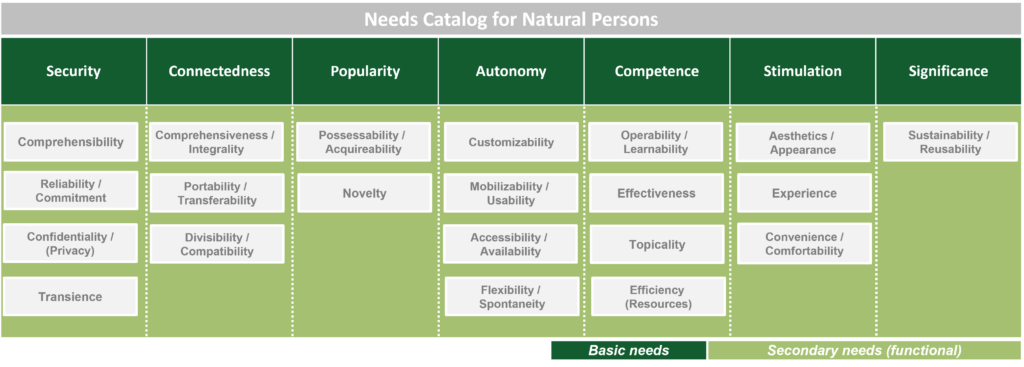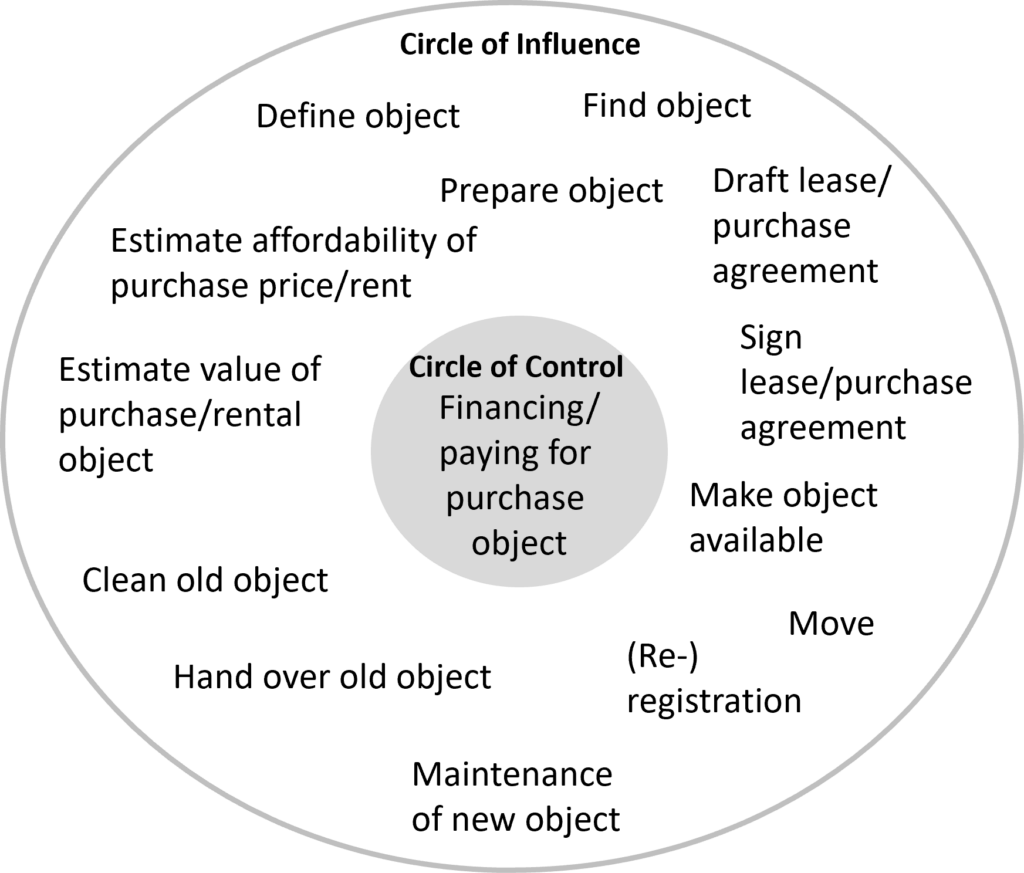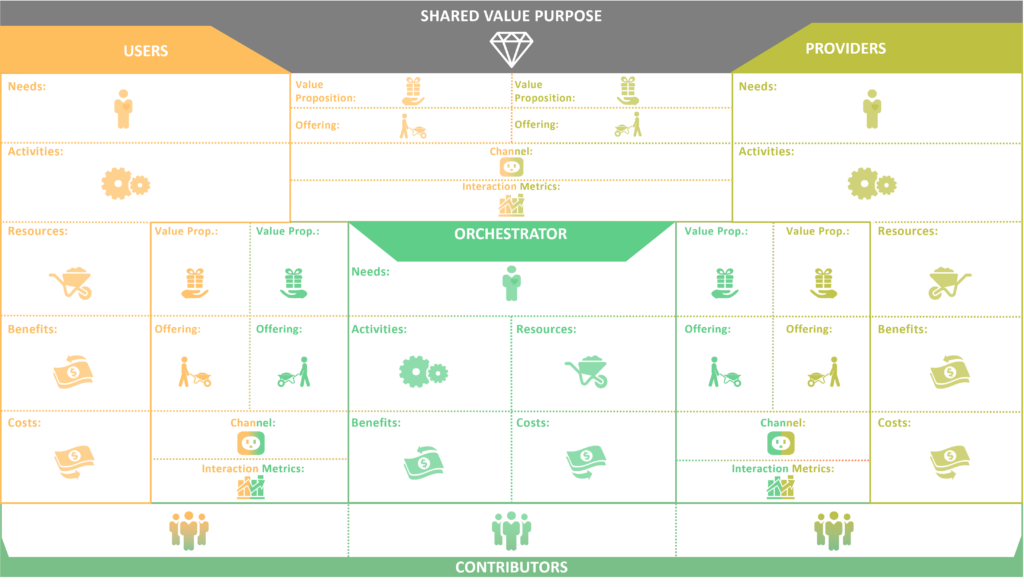
9 Steps to Unlocking Business Ecosystems
The development of a business ecosystem promises the opportunity to provide existing customers with integrated services through cooperation, in some cases across industries, and to gain access to new customer groups. Topics such as co-creation and data insights can also play a role. However, building a business ecosystem by yourself is a challenging task, as there are many parties to orchestrate around a value proposition that is attractive to all participants. It is also important to decide on how to distribute the jointly created value in a way that is fair in the eyes of all participants, while future profitability is not yet assured. In some cases, profitability will even play a subordinate role if the development of a business ecosystem is necessary to ensure attractive offerings for customers in the long term.
To increase the chances of success for such a project, it is worth taking a structured approach that not only helps with the design of a promising solution, but also with discovering potential stumbling blocks as early as possible and, at best, avoiding them.
One such approach, which is already used by several banks in German-speaking countries, is presented in this article[1].

Preparation
Since building a business ecosystem is a resource-intensive process with an uncertain outcome, it is a decision that should be considered carefully. Before taking a decision, therefore, the first step, step 0, is to analyze the current positioning of your own company: What role could you play in which business ecosystems (BE) with your current offering? In which BEs are you perhaps already active? Is engagement in additional BEs necessary to achieve certain strategic goals? Depending on your company and the context, further considerations may not be necessary at this point because it turns out that participation in a particular BE is not conducive to your company’s goals or that your existing commitments may be sufficient. Alternatively, this step, which I already discussed in more detail in my last post, might help you identify existing BEs that you would like to join.
If you make the decision to establish a new BE, you must develop it iteratively and involve the relevant players as early as possible in collaborative processes. Business ecosystems are formed around an overarching core value proposition, around which individual players are arranged.
It should be noted that the steps presented must be adapted to your individual situation and might also have to be carried out in parallel or in a revolving manner. A business ecosystem cannot be designed exactly on the drawing board but requires several iterative development rounds. At the same time, the sooner you involve the partners relevant to your business ecosystem in the discussion, the more promising the result will be. But again, a business ecosystem is an excellent construct to get completely bogged down in. Therefore, it is best to start with a rather small service bundling that fits an identified target group. You can then expand and extend it over time if necessary. This applies regardless of whether your company is thinking about joining an existing business ecosystem or is planning to initiate a new business ecosystem.
The following further steps or activities are necessary to analyze and understand your strategic positioning in business ecosystems.
1. Analyzing the Future Development of Customer Needs and Your Own Business
A trend analysis can help you identify, analyze, and discuss changes in customer needs. Other possible instruments for finding out about customers’ motives and problems include methods from design thinking or the jobs-to-be-done approach. However, a trend radar can also help you sharpen the understanding of the direction in which your own company wants or needs to develop by analyzing the impact of trends not only on the customer, but also on your business model, market, processes, systems, and service offerings[2].

2. Specifying Your Idea – Deriving the Core Value Proposition and Target Group
Business ecosystems develop as dynamic structures around a central core value proposition or common purpose. Eliciting the needs of the target audience is critical in this process. In order to understand the needs of the participants, you can, for example, refer to needs overviews of corporate and private customers.

3. Specifying Services & Needs of the Participants in the Business Ecosystem
The aim of this step is to elicit certain services as core services and to identify possibly complementary services. What are services that can complement your initial offering (e.g., the newspaper or access to streaming services during the train ride)? Which services do customers need directly before or after the actual core service to meet their respective needs (e.g., ride to the station)?

Another tool for tapping into these services is the “circle of influence” model. Originating in psychology, it can help companies identify activities that they can either carry out themselves (circle of control) or influence in cooperation with third parties (circle of influence)[3].

At the same time, this tool can also be used to understand which activities the customer has been performing up to now and where relief can be created for him in the sense of an integrated service.[4]
4. Specifying Further Services & Needs of the Participants in the Business Ecosystem
The identified core and related services can be further refined by changing your perspective and asking in which situations customers have a need for such services and/or when they deal with the underlying challenges. For this, you can use company or personal event maps, for example.

5. Determining the Companies Participating in the Business Ecosystem and Their Activities (Target Situation)
In this step, you need to identify the specific partners you want to collaborate with, considering their offerings, resources and needs. Furthermore, you should systematically evaluate the participants based on your requirements regarding cooperation partners. Selection criteria could be, for example, market power, reputation, or scalability. Once you have selected your potential partners and started discussing your possible partnership, you need to start going through these steps again from the beginning and supplement your initial answers with input from your partners.
6. Aggregating Your Results
Subsequently, you can aggregate the results of your analyses in the Ecosystem Business Canvas. The Ecosystem Business Canvas visualizes which capabilities and individual value propositions in an ecosystem interlock to fulfill the core value proposition.

7. Indicative Revenue Mechanism
Of course, every strategic initiative is expected to be able to make at least an initial statement about what the business case will look like. This is quite challenging, especially in the context of business ecosystems. But an initial indication of what indirect and direct costs and revenues are associated with building a business ecosystem is the basis for deciding on the next steps. It is also permissible to ask what the consequences will be if a business case that is not yet clearly discernible leads to the abandonment of interaction in the BE. Companies will have to operate in networks in the longer term if they want to be part of meeting the end customer’s needs with integrated solutions.
8. Understanding the Existing Business Ecosystems
Often, an examination of the needs, associated services, and offerings of third parties reveals that these companies are also already active in business ecosystems. A systematic analysis of the environment of these companies can help you determine whether you can also provide your target services in your “partners’ ecosystems”. A business ecosystem radar can serve as an aid here.
9. Settling on a Business Ecosystem Portfolio Strategy
Once you have gained a basic understanding of what a possible new business ecosystem could look like and which business ecosystems already exist around your chosen core value proposition, you can now decide whether you want to pursue a “build” or an “integrate” strategy. If your company already participates in one or more business ecosystems, your strategic options of course also include “disintegrating”.
Conclusion
Designing and building a business ecosystem is a challenging project, which a list like this can hardly do justice to. Nevertheless, the nine steps outlined here can provide you with an initial overview of the process you must follow to develop an ecosystem strategy. Other questions you will face before you get to the actual implementation include: What does our technical infrastructure in the ecosystem look like? What data do we as participants share with each other and what interfaces do we use? Finally, technology is an important enabler for the construction of BE. However, you should always bear in mind that the success of such a construct is shaped above all by the mindset and culture of the participating companies.
[1] The approach presented here is based on theoretical and empirical research at the Competence Center Ecosystems of the Business Engineering Institute St. Gallen.
[2] For more on this, see the section “Overview of the Ecosystem Cosmos” in my (German) article Ecosystems from A(nalysis) to P(ositioning).
[3] https://www.habitsforwellbeing.com/the-circle-of-concern-and-influence/
[4] I present further tools for specifying ecosystem services in my (German) article Ecosysteme von A(nalyse) bis P(ositionierung).
